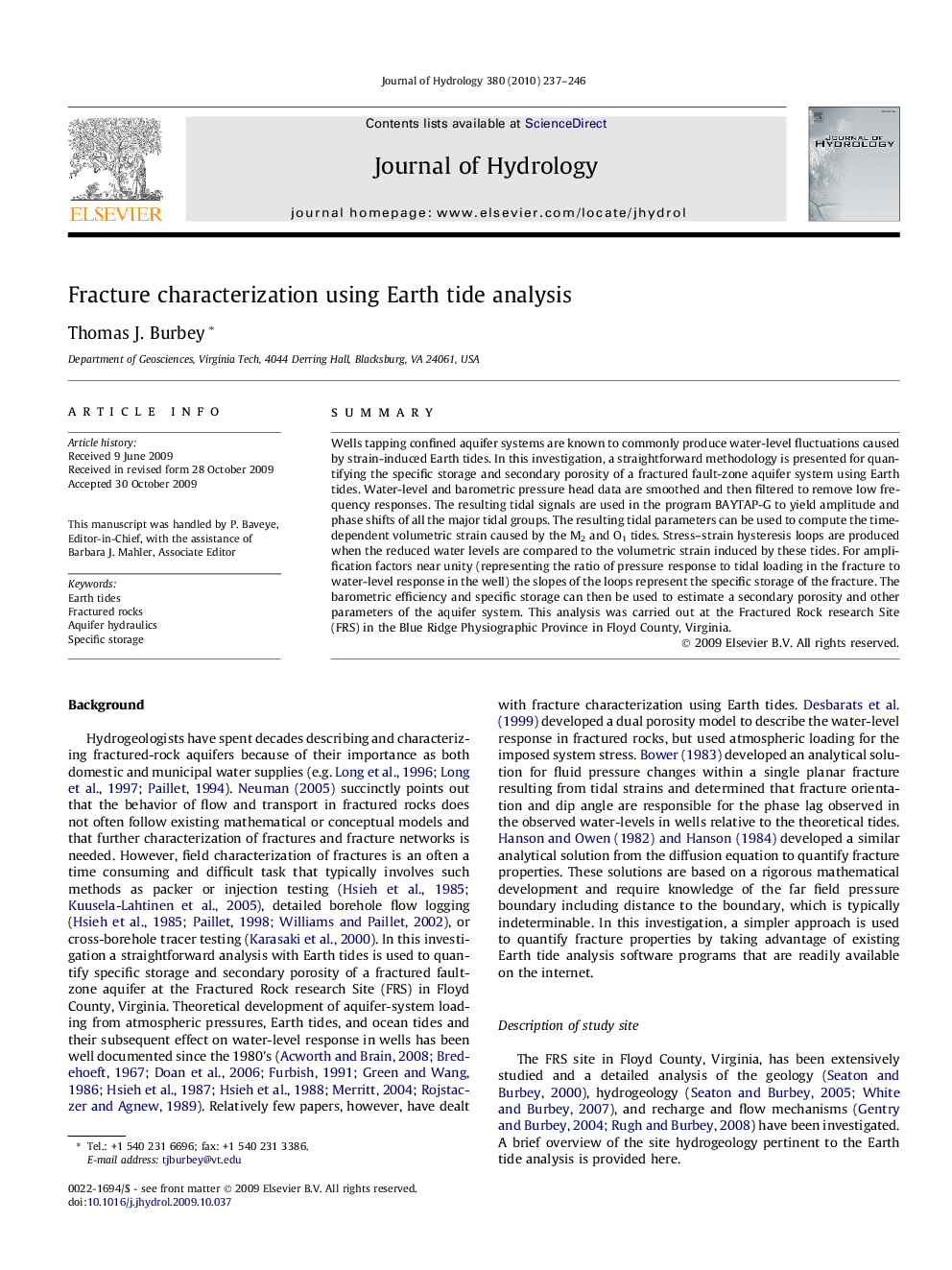| Article ID | Journal | Published Year | Pages | File Type |
|---|---|---|---|---|
| 4578362 | Journal of Hydrology | 2010 | 10 Pages |
SummaryWells tapping confined aquifer systems are known to commonly produce water-level fluctuations caused by strain-induced Earth tides. In this investigation, a straightforward methodology is presented for quantifying the specific storage and secondary porosity of a fractured fault-zone aquifer system using Earth tides. Water-level and barometric pressure head data are smoothed and then filtered to remove low frequency responses. The resulting tidal signals are used in the program BAYTAP-G to yield amplitude and phase shifts of all the major tidal groups. The resulting tidal parameters can be used to compute the time-dependent volumetric strain caused by the M2 and O1 tides. Stress–strain hysteresis loops are produced when the reduced water levels are compared to the volumetric strain induced by these tides. For amplification factors near unity (representing the ratio of pressure response to tidal loading in the fracture to water-level response in the well) the slopes of the loops represent the specific storage of the fracture. The barometric efficiency and specific storage can then be used to estimate a secondary porosity and other parameters of the aquifer system. This analysis was carried out at the Fractured Rock research Site (FRS) in the Blue Ridge Physiographic Province in Floyd County, Virginia.
